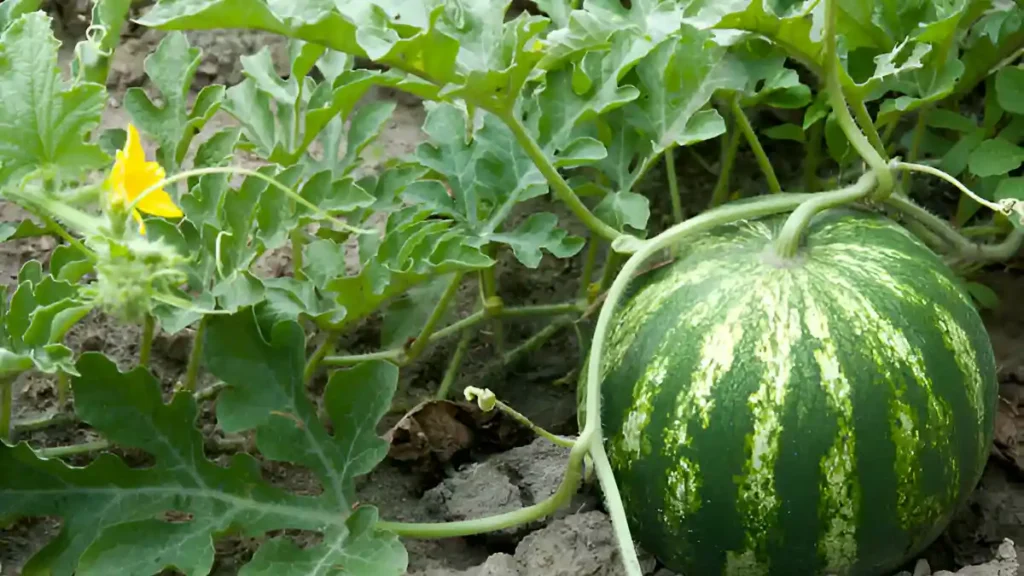Growing watermelon may be a productive and pleasurable gardening endeavor, producing juicy, sweet fruits ideal for the summer. But growing big, tasty watermelons requires close consideration of a few crucial elements. No matter how experienced you are in gardening, you can still cultivate the best-tasting watermelons by learning the fundamentals and putting some professional advice into practice.
Guidelines on how do watermelons grow
- When thinking about growing watermelons, remember that it’s pretty easy. The plant does everything. Watermelons thrive in warmer climates, but if you reside in the north, there are some helpful recommendations you may follow to make your attempts to produce them fruitful.
- One of the best ways to cultivate watermelon in the north is to start early varieties indoors and utilize transplants rather than sowing seeds directly into the ground. Large-growing watermelon seedlings don’t transplant well, so although the plants can be started indoors and then moved outdoors, don’t start them too early.
Tips for growing watermelon:
1. Choosing the Correct Varietal
Selecting the right type of watermelon is essential. Fruits of various shapes, sizes, and sweetness levels are produced by distinct types, each with its specific growing requirements. Among the popular kinds are:
- Sugar Baby: Distinguished by its little stature and delicate nature.
- Crimson Sweet: A big variety with a lot of sweetness.
- Jubilee: Generates long, massive fruits.
2. Ideal conditions for growth
Although it can withstand temperatures as high as 90°F (32°C), the crop thrives best in long, hot summers with daytime highs of 70 to 85°F (21 to 29°C). Planting should wait until there is no longer a chance of frost because cold is harmful to crops. The watermelon’s growth and harvesting period will be slowed by cold temperatures below 50°F (10°C) or high temperatures above 95°F (35°C). 8 to 10 hours a day in direct sunlight.
3. Ideal soil for growing watermelons
Given the crop’s high nutritional needs, lush, nutrient-rich soils are ideal for its growth. Although sandy loam is the best type of soil for growth, the crop will grow in practically any type of soil that drains well. Growing these plants might be challenging in excessively clay-rich, poorly draining soils.
Plant development and yield are closely correlated with soil pH since the latter influences the plant’s capacity to absorb nutrients. Watermelons grow best on soils with an acidic pH of 6.0 to 6.5. Soil additives can be used to bring the pH of the soil to the optimal level needed for crop growth.
4. How to get your soil ready for watermelon
Before planting watermelons, clear the field of pebbles and trash, aerate the soil, add old manure or compost, and lime to balance acidity and nutrient absorption. Irrigate the field and let it dry and warm before planting.
5. When to start growing watermelon
In temperate growing zones, direct sowing is the recommended method; in colder growing regions, start seeds indoors two to three weeks before the last anticipated frost. Watermelons should not be planted in a hurry since seeds sown too soon may take longer to germinate and result in uneven stands.
6. Properly spaced
Watermelons need lots of room to spread out. Sow seeds or seedlings 6 to 12 feet apart in rows, with 6 to 8 feet between each row to provide for proper air circulation and plenty of growing space.
Watermelon plant care tips:
- Because their roots are deep, watermelons less regularly but deeply. Try for one to two inches of water each week. For disease prevention and dry foliage, use soaker hoses or drip irrigation.
- For foliage growth promotion, use a fertilizer high in nitrogen. When the vines start to flower, switch to a fertilizer with higher potassium and phosphorus content. During this stage, an excess of nitrogen can result in more foliage and fewer fruits.
- Reduce overgrown vines to focus the plant’s energy on developing fruit. To maximize the amount of space and sunshine exposure, train the vines to grow in a particular direction.
Conclusion:
Producing larger, more flavorful watermelons through successful cultivation. You can raise your chances of growing watermelon that are a summertime delight by paying attention to these guidelines.
Certainly! If you’d like to learn more, please consider following our WhatsApp Channel: Harvest Gardening
A frequently asked questions:
Q1: When is the best time to harvest watermelon?
A1: When the tendril nearest to the fruit turns brown and dries up, the melon’s underside becomes yellow, and the fruit taps hollow, watermelons are ready to be harvested.
Q2: What are the varieties of some fastest-growing watermelon?
A2: With a maturity period of roughly 75 to 80 days, the ‘Sugar Baby’ watermelon is frequently the fastest-growing type.
Q3: How can I prevent pests and diseases in watermelon plants?
A3: Aphids, cucumber beetles, and squash bugs are common pests. To manage infestations, apply neem oil or insecticidal soap. Crop rotation, adequate spacing for air circulation, and steering clear of overhead watering are ways to prevent diseases such as fusarium wilt and powdery mildew.

